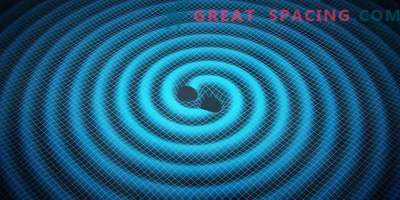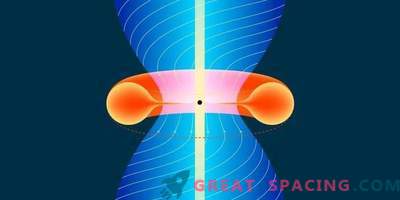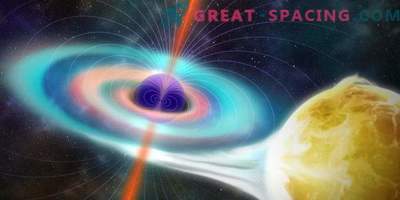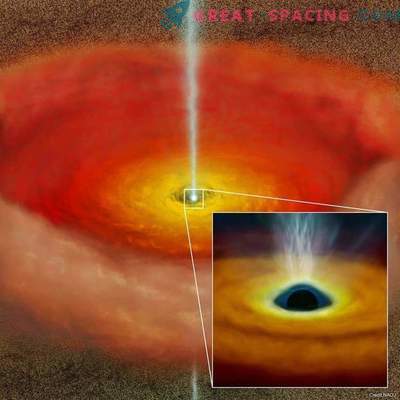
Thanks to the first simulations performed on a supercomputer, scientists have gained a new insight into one of the most mysterious phenomena - the behavior of relativistic jets coming from black holes.
Advanced simulations show that jet streams gradually change direction in the sky, because of which space-time is drawn into the rotation of a black hole. This behavior is consistent with Albert Einstein's predictions of extreme gravity near rotating black holes.
Understanding the process of rotation of black holes and the distortion of space-time around them is still a nebulous puzzle. But the supercomputer gradually brings us closer to the answer.
Rapidly rotating black holes not only absorb matter, but also release energy in the form of relativistic jets. The gas and magnetic fields entering the hole rotate to form a disk — entangled magnetic field lines and hot gas. The black hole soaks up this astronomical broth, leaving magnetic field lines. This transforms a black hole into a launching pad, from which energy in the form of relativistic jets breaks out into space.
Released jets are much easier to study than black holes themselves. This study allows us to understand how rapidly the direction of the jet is changing, as well as to understand the directivity and parameters of the rotating disk.
Early models concentrated on leveled discs. In reality, they are located at an angle (the disk rotates around a separate axis from the black hole). The study confirms that when tilted, the disks change direction with respect to the black hole.
Previously, the precessing jets could not be found, because the creation of a 3D model of the area around a rapidly rotating black hole requires tremendous computing power. That is why I had to write the first code of the black hole simulation accelerated by graphics processors. As a result, scientists were able to test simulations on one of the largest supercomputers in the world, Blue Waters.
The high resolution made it possible for the first time to verify that small-scale turbulent motion of the disk was fixed in the models. Surprisingly, the movements were so strong that they forced the disk to fatten and the precession stopped.
Comparison of low-resolution simulation (left) and Blue Waters high (right). The second model shows that precession and alignment slow down due to disk expansion due to magnetic turbulence
The black hole accretion is an incredibly complex system resembling a hurricane. But the process goes so far that we can not consider doing it. Therefore, simulations allow a much clearer understanding of the behavior of black holes.
The simulation results will affect further research related to rotating black holes. It will also help to understand the gravitational waves created by the impact of neutron stars and electromagnetic fireworks. The calculations will also affect the interpretation of the observation of the Event Horizon Telescope recording the shadow of a supermassive black hole in the galactic center.
In addition, the precession of the jets was able to explain the oscillations of the intense light that occurs due to black holes. We are talking about quasi-periodic oscillations. For the first time they were noticed in 1985.











































